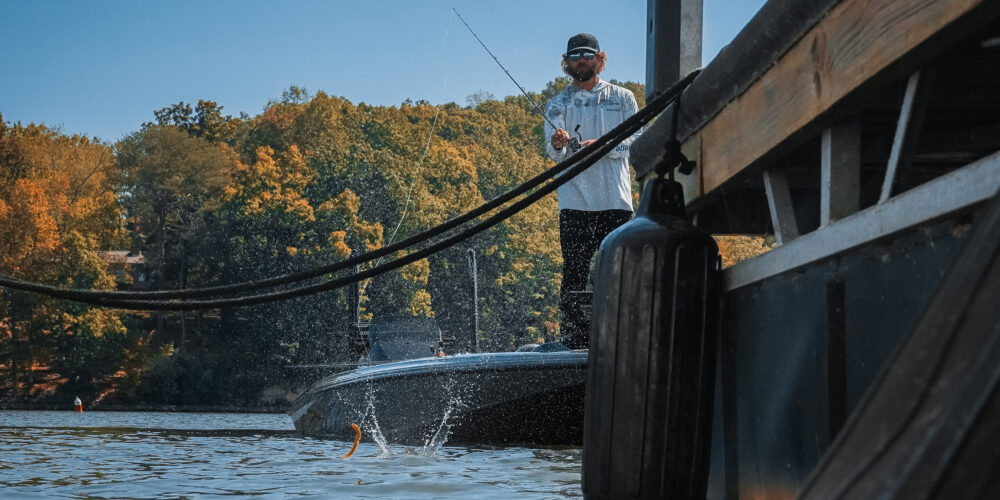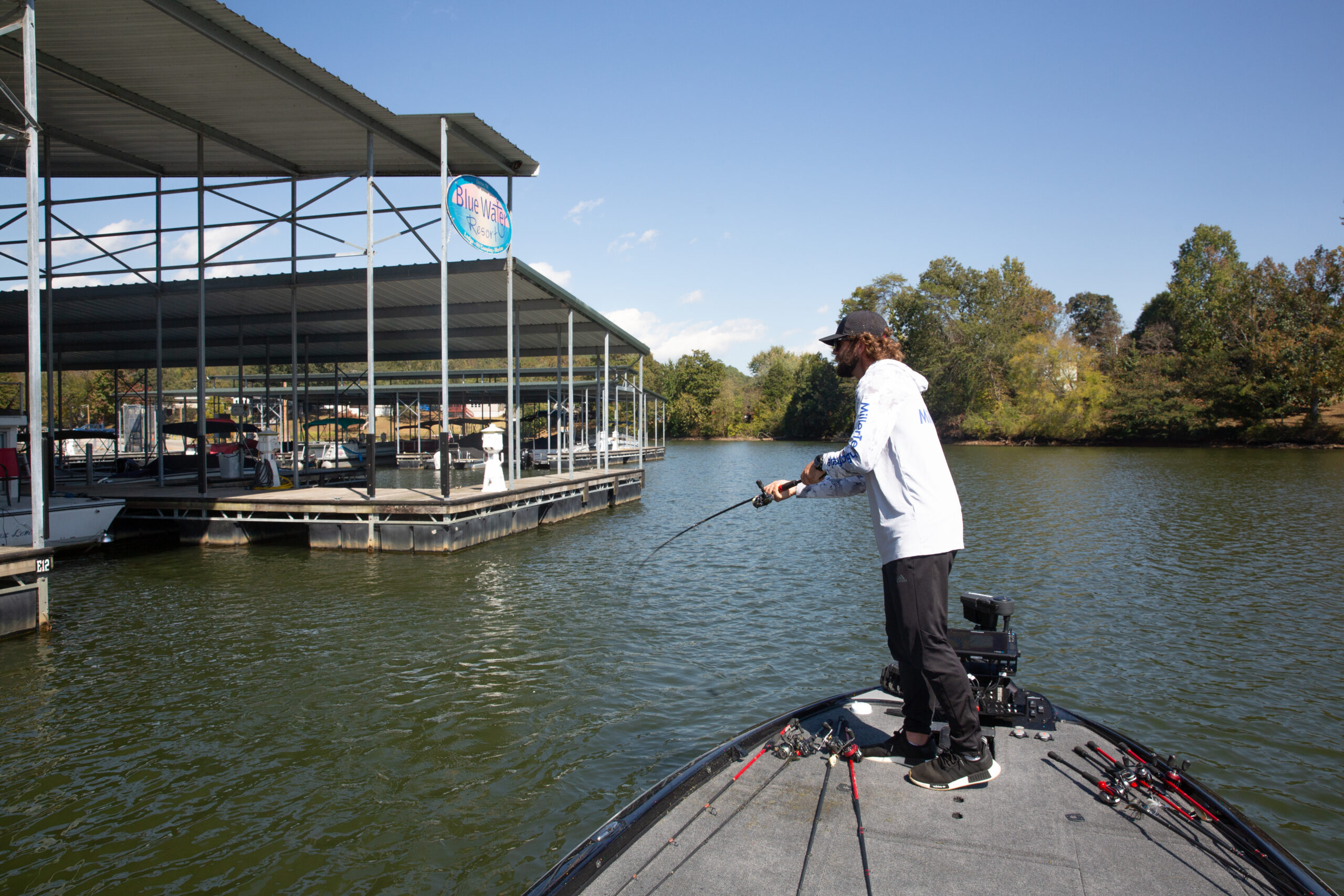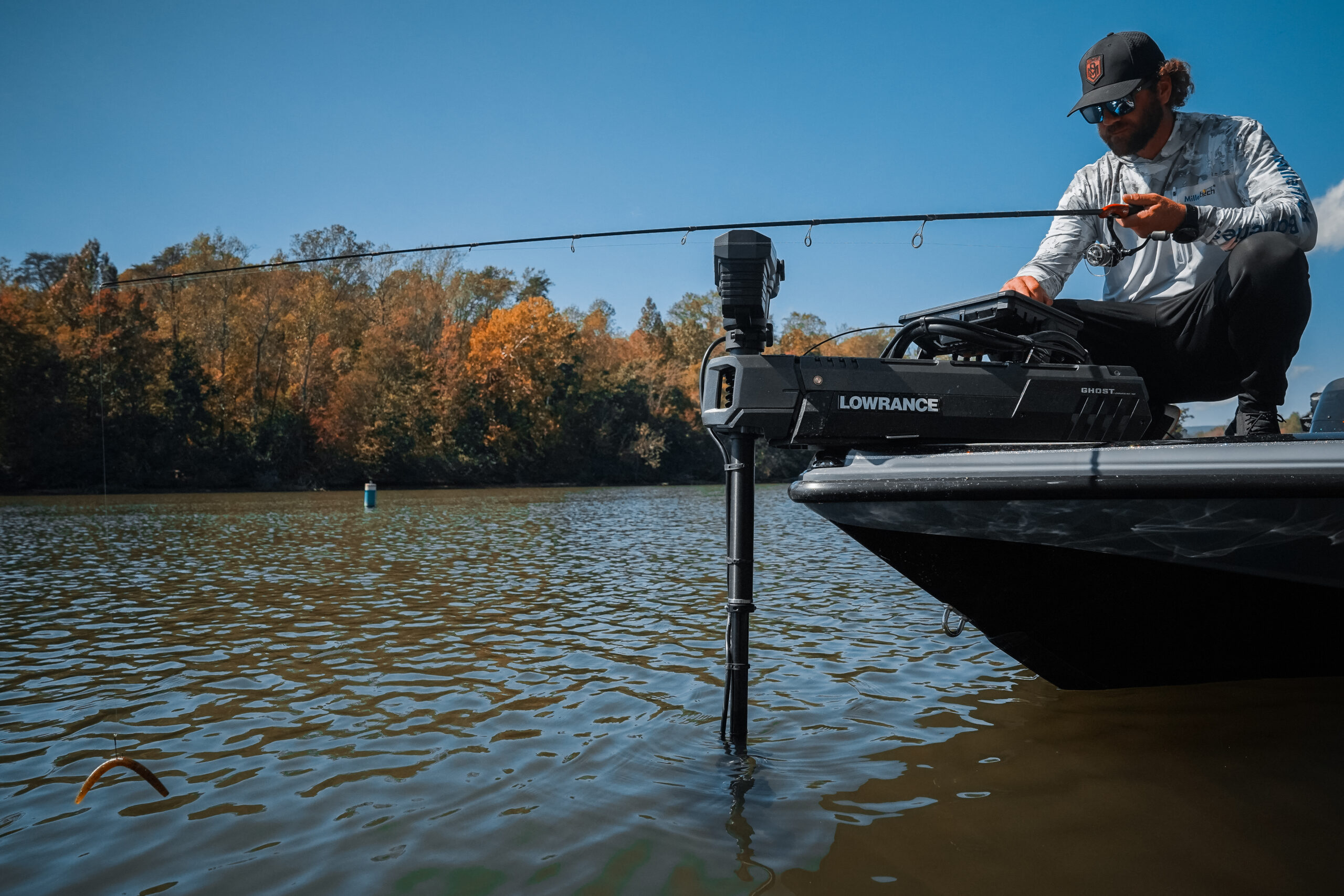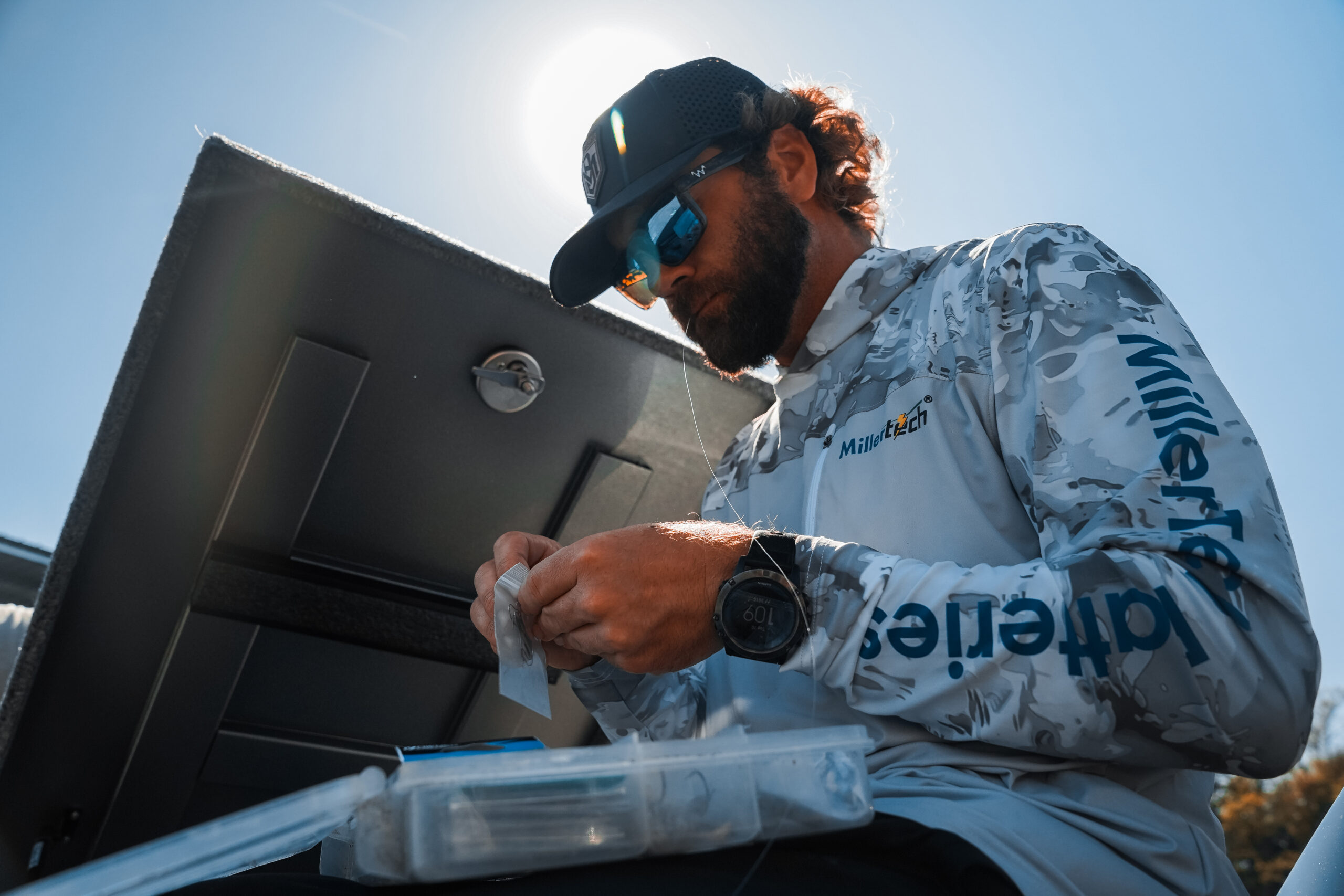Probing docks for fall bass

While frogging and flipping grass get a lot of attention in the fall – and for good reason – bass can get conditioned to seeing those baits invade their habitat. With so many anglers looking to take advantage of the grass bite, inundating the same areas with pressure week after week in the fall, there’s a year-round gold mine just waiting to be harvested.
They’re always there. They almost always hold fish. And as the weather begins to cool and bass are on the hunt for schools of shad, they can be true difference makers: docks.
John Hunter, who completed his rookie year on the Bass Pro Tour in 2023, knows more than a thing or two about probing docks for big fall bass. It’s one of his favorite methods for avoiding the crowds and zigging where others zag. Instead of grass, he’s more likely to run a winning dock pattern ahead of the fall-to-winter transition.
Why docks shine in the fall

“I think a lot of times in the fall topwaters, Whopper Ploppers and the grass bite can steal the show,” Hunter said of the predominant patterns on many fisheries. “Something that oftentimes gets overlooked is the dock bite. Don’t get me wrong, (docks) are popular, but sometimes other stuff outshines it.”
Every season can offer a solid dock bite, but in the fall especially, there are reasons to take to the shallow, shady cover of floating and permanent docks. For one, bait moves shallow in the fall, often taking up residence in creeks and pockets, and often in the shallowest part of those backwaters.
“In the fall, a lot of times bait will push toward the backs of those creeks and pockets in a lot of fisheries in the Midwest and South,” Hunter said. “You don’t necessarily have to see bait (on your electronics). That’s just the general migration of how things go, especially when it’s transitioning from summer warmth to fall cooldown.”
In addition to shallow docks in creeks and pockets, Hunter likes to target community docks and marinas for their often abundant populations of fish that reside under walkways and pontoon boats year-round.
“If the fishery has a decent population of spotted bass, the community docks and marinas can really shine,” Hunter said. “There’ll be largemouth mixed in as well, but spotted bass love marinas. Marinas are good year-round. They offer shade, bait, cover – they’re just always good. I’ll never discount looking in a marina for a dock bite.”
Where to look

Hunter isn’t concerned with deep-water access when it comes to running docks. Again, in the fall, baitfish move shallow, and the bass move with them. He prefers docks in the shallower areas of creek arms. Those are the first docks he targets – especially the isolated ones.
“In the fall, bait tends to push up on the flatter parts of pockets and creeks, and I look for the last handful of docks in every pocket or creek,” he said. “The flatter the better. If it has some depth to it, I’ll flip a jig. If it’s shallower than 3 feet, I’m going to skip a weightless worm.”
Tools of the trade

Along with a jig and wacky worm for slower presentations, Hunter wields an arsenal consisting of a vibrating jig, swimbait and swim jig. For topwater presentations, he leans on a buzzbait.
“You can run a buzzbait around those docks, under the walkways, down the sides of the floats,” he said. “That’s what I’ll do in the mornings is I’ll buzz the backs of those pockets and creeks, and then when the sun gets up, I’ll start running those isolated docks on the flat side.”
While the buzzbait, jig and wacky worm are the main players around shallow, isolated docks, he’ll expand the arsenal in marinas to cover more water, at least until the fish show they want something a little slower.
“When I’m attacking the marina docks, I’m winding a ChatterBait down them depending on water clarity – either a ChatterBait or a little finesse swimbait on a light jig head,” he said. “In the spring, I’ll opt for bigger baits, but in the fall, a lot of times those fish are feeding on smaller shad, so I’ll go with a ChatterBait with a Googan Baits trailer or I’ll use a Saucy Swimmer on a swim jig or a swim jig with no skirt. If the water’s clear, I’ll take the skirt off for a smaller profile and I’ll put the Saucy Swimmer straight on the swim jig just so I have the weed guard for fishing around ropes and cables.”
A couple important tips
For Hunter, making the most of every cast and getting every bite in the boat are key. Because he prefers to cast and skip right-handed and gets a better hook set from that position as well, he tries to always make casts out the lefthand side of his boat. Be sure to keep that in mind when you’re trolling around and between docks and slips: Positioning is crucial.
As for environmental factors, Hunter admits there isn’t a lot to take into account when probing docks in the fall. They’re generally going to produce, even amid temperature swings that are so common this time of year. However, if there’s a drastic water temperature drop of more than six or seven degrees overnight, be aware the bass might be more finicky and harder to get to bite. That situation might call for more methodically picking apart docks with slow-moving baits.
While everyone else is dragging frogs over mats and flipping grass for a few good bites a day, don’t be afraid to go back to the beaten path to take advantage of targets that are sure to hold fish this time of year.